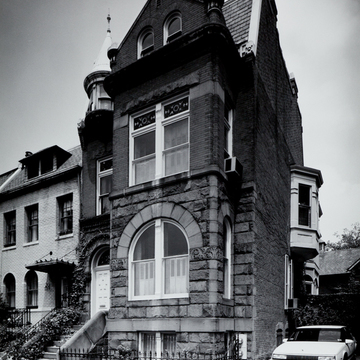Of the many substantial, individually designed Capitol Hill houses in which the Richardsonian Romanesque and Queen Anne styles were used together, the Rabe house is one where the two idioms were successfully separated into distinct zones. The house's forms—a massive square front bay intersected by a subsidiary volume whose shallow, gabled bay faces the adjoining alley—are robustly sculptural with the Richardsonian
You are here
Henry Rabe House
1891, Frederick G. Atkinson. 820 D St. SE
If SAH Archipedia has been useful to you, please consider supporting it.
SAH Archipedia tells the story of the United States through its buildings, landscapes, and cities. This freely available resource empowers the public with authoritative knowledge that deepens their understanding and appreciation of the built environment. But the Society of Architectural Historians, which created SAH Archipedia with University of Virginia Press, needs your support to maintain the high-caliber research, writing, photography, cartography, editing, design, and programming that make SAH Archipedia a trusted online resource available to all who value the history of place, heritage tourism, and learning.










